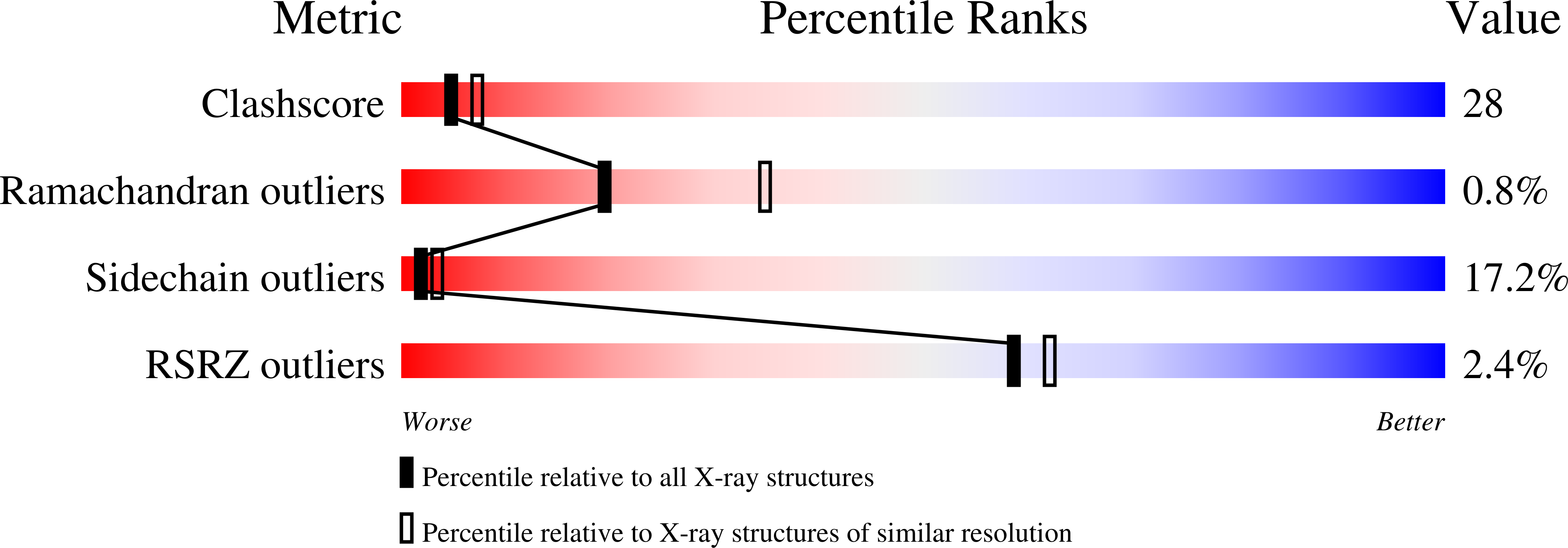Roles of active site aromatic residues in catalysis by ketosteroid isomerase from Pseudomonas putida biotype B.
Kim, D.H., Nam, G.H., Jang, D.S., Choi, G., Joo, S., Kim, J.S., Oh, B.H., Choi, K.Y.(1999) Biochemistry 38: 13810-13819
- PubMed: 10529226
- DOI: https://doi.org/10.1021/bi991040m
- Primary Citation of Related Structures:
1C7H - PubMed Abstract:
The aromatic residues Phe-54, Phe-82, and Trp-116 in the hydrophobic substrate-binding pocket of Delta(5)-3-ketosteroid isomerase from Pseudomonas putida biotype B have been characterized in their roles in steroid binding and catalysis. Kinetic and equilibrium binding analyses were carried out for the mutant enzymes with the substitutions Phe-54 --> Ala or Leu, Phe-82 --> Ala or Leu, and Trp-116 --> Ala, Phe, or Tyr. The removal of their bulky, aromatic side chains at any of these three positions results in reduced k(cat), particularly when Phe-82 or Trp-116 is replaced by Ala. The results are consistent with the binding interactions of the aromatic residues with the bound steroid contributing to catalysis. All the mutations except the F82A mutation increase K(m); the F82A mutation decreases K(m) by ca. 3-fold, suggesting a possibility that the phenyl ring at position 82 might be unfavorable for substrate binding. The K(D) values for d-equilenin, an intermediate analogue, suggest that a space-filling hydrophobic side chain at position 54, a phenyl ring at position 82, and a nonpolar aromatic or small side chain at position 116 might be favorable for binding the reaction intermediate. In contrast to the increased K(D) for equilenin, the enzymes with any substitutions at positions 54 and 116 display a decreased K(D) for 19-nortestosterone, a product analogue, indicating that Phe-54 and Trp-116 might be unfavorable for product binding. The crystal structure of F82A determined to 2.1-A resolution reveals that Phe-82 is important for maintaining the active site geometry. Taken together, our results demonstrate that Phe-54, Phe-82, and Trp-116 contribute differentially to the stabilization of steroid species including substrate, intermediate, and product.
Organizational Affiliation:
Department of Life Sciences, Center for Biofunctional Molecules, Pohang University of Science and Technology, South Korea.














